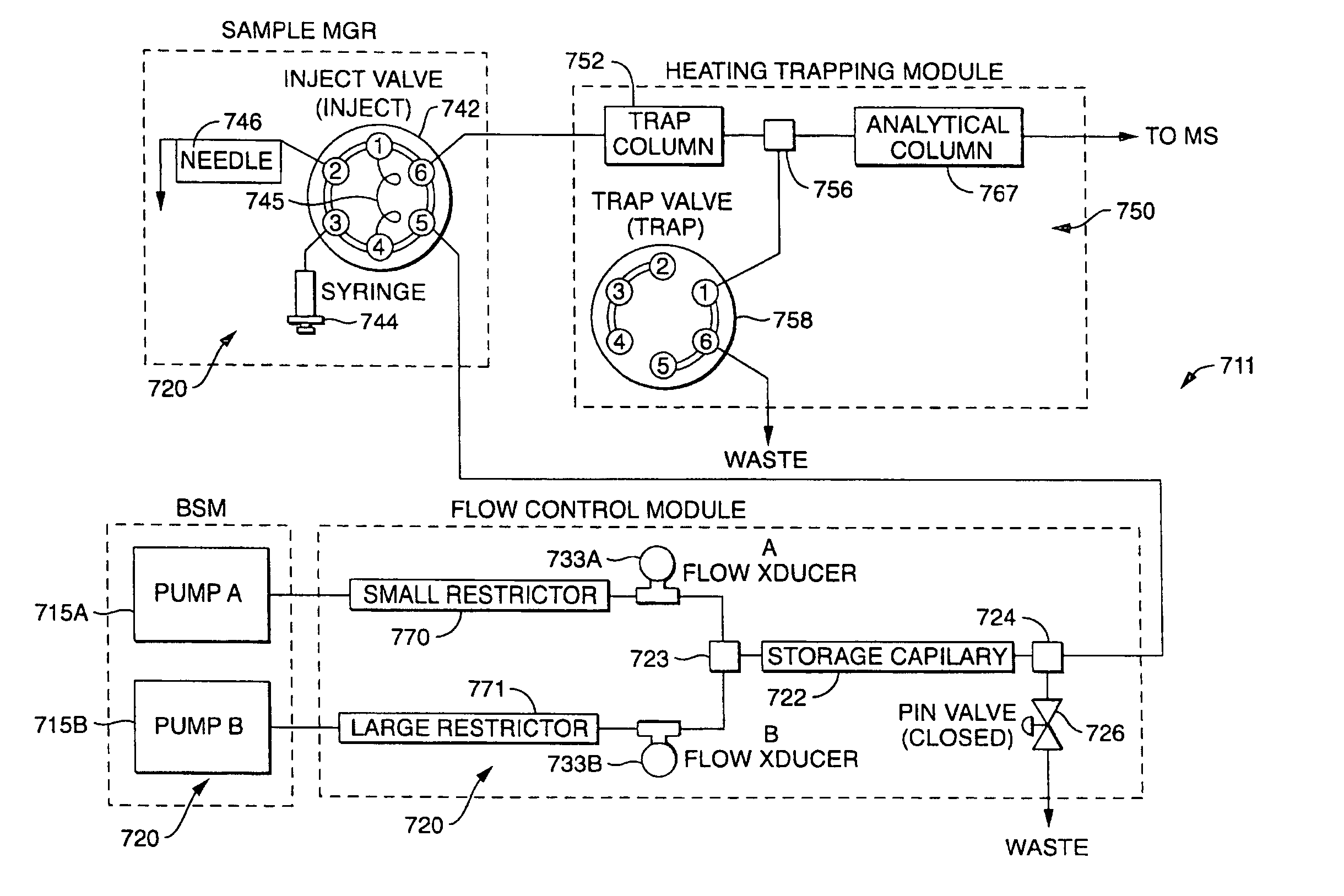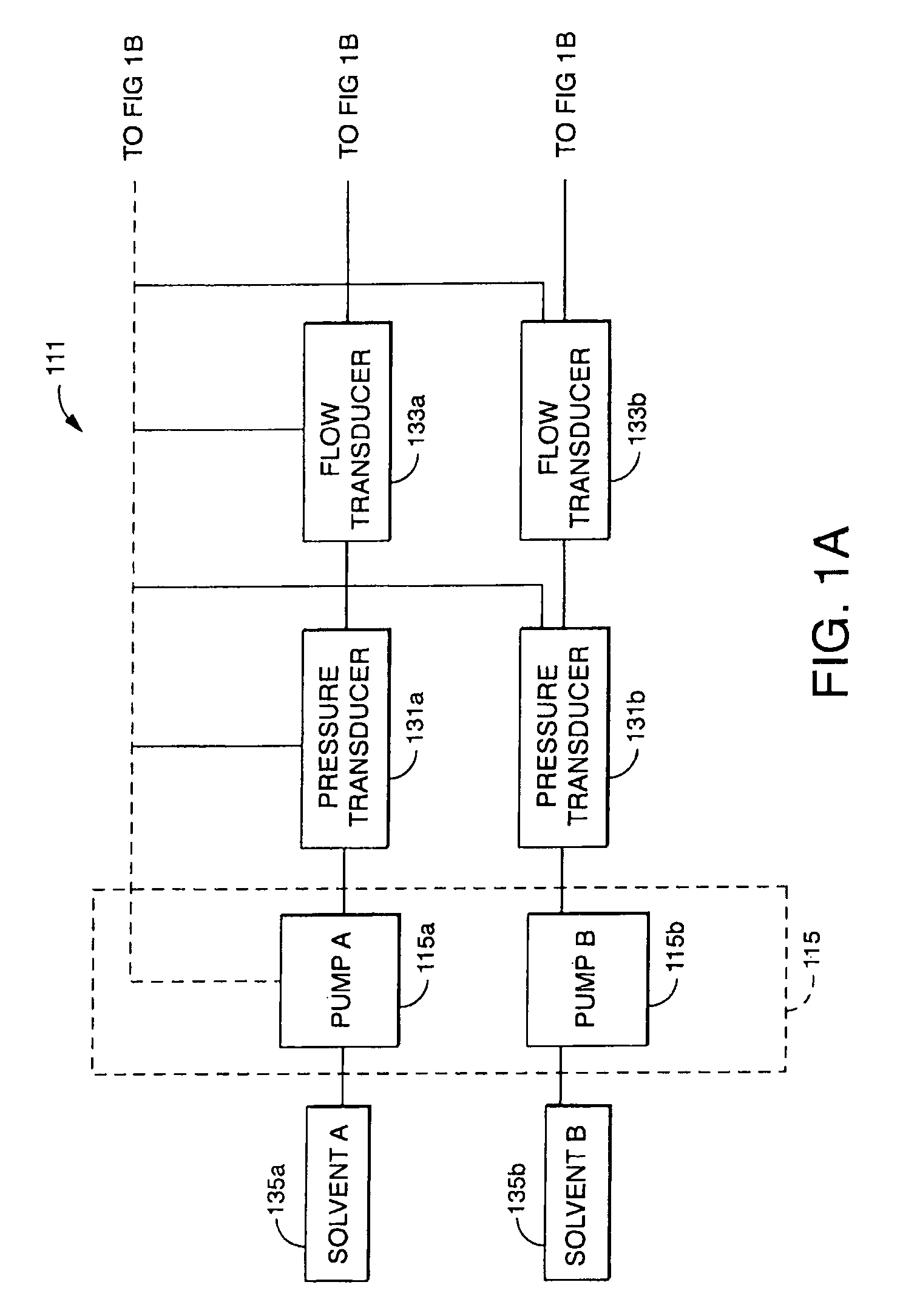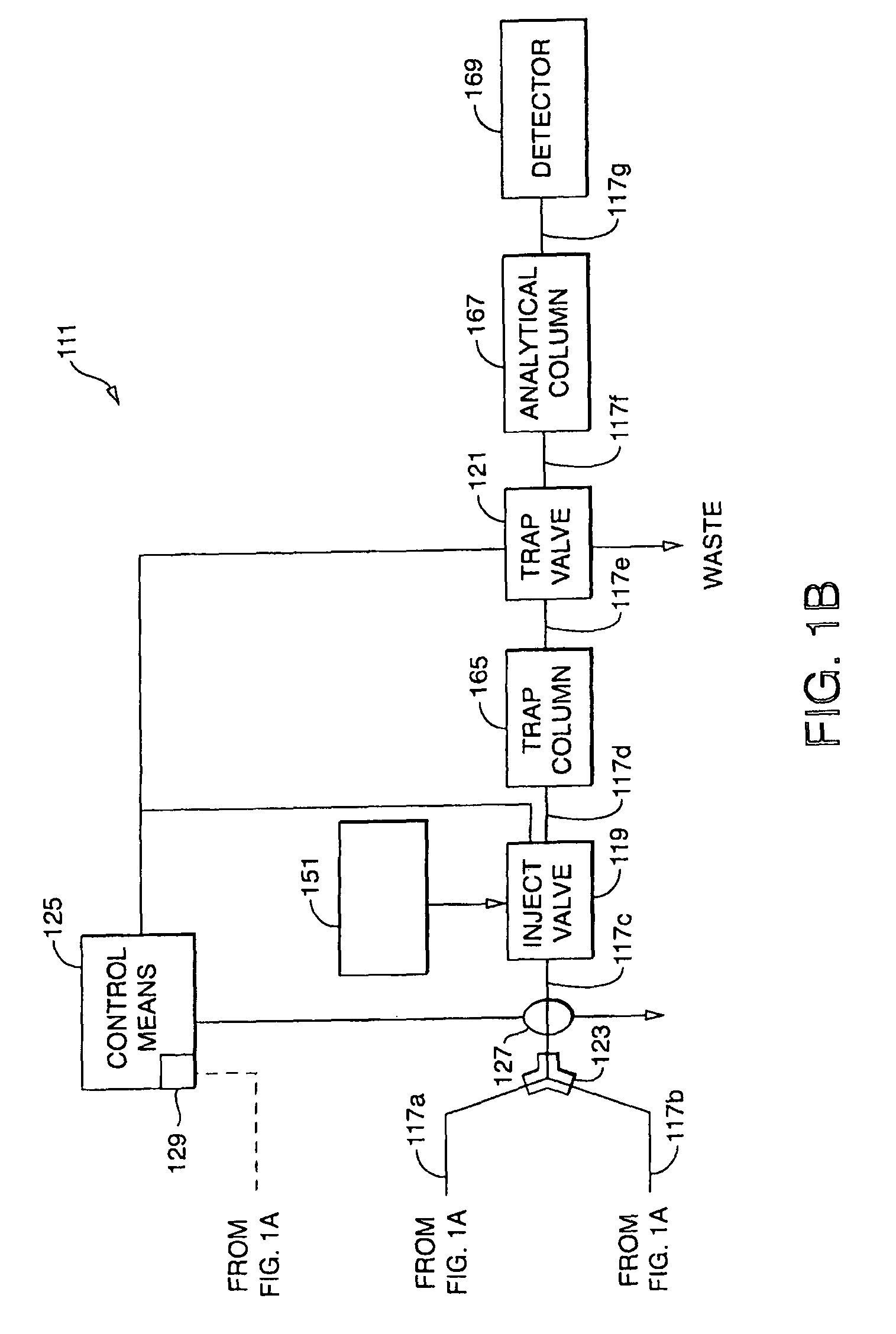Solvent delivery system for liquid chromatography that maintains fluid integrity and pre-forms gradients
a liquid chromatography and fluid integrity technology, applied in the field of analytical techniques, can solve the problems of increasing the difficulty of maintaining the proper mixture of the gradient, reducing the accuracy of the gradient, so as to prevent cross-flow and back-flow contamination, reduce the loss of maximum operating pressure, and avoid feedback instability
- Summary
- Abstract
- Description
- Claims
- Application Information
AI Technical Summary
Benefits of technology
Problems solved by technology
Method used
Image
Examples
Embodiment Construction
[0079]The present invention overcomes many of the prior art problems associated with delivering solutions to nano-flow capillary LC instruments. The present disclosure maintains the integrity of a fluid mixture by recognizing when undesirable mixing may occur and employing pump settings to prevent such mixing. The present disclosure also illustrates pre-forming gradients a low pressure and high flow in order to increase throughput of LC instruments. The advantages, and other features of the system disclosed herein, will become more readily apparent to those having ordinary skill in the art from the following detailed description of certain illustrative embodiments taken in conjunction with the drawings which set forth representative embodiments of the present invention.
[0080]All relative descriptions herein such as upstream, downstream, left, right, up, and down are with reference to the Figures, and not meant in a limiting sense. Additionally, for clarity, common items such as filt...
PUM
| Property | Measurement | Unit |
|---|---|---|
| elution flow rate | aaaaa | aaaaa |
| elution flow rate | aaaaa | aaaaa |
| elution flow rate | aaaaa | aaaaa |
Abstract
Description
Claims
Application Information
 Login to View More
Login to View More - R&D
- Intellectual Property
- Life Sciences
- Materials
- Tech Scout
- Unparalleled Data Quality
- Higher Quality Content
- 60% Fewer Hallucinations
Browse by: Latest US Patents, China's latest patents, Technical Efficacy Thesaurus, Application Domain, Technology Topic, Popular Technical Reports.
© 2025 PatSnap. All rights reserved.Legal|Privacy policy|Modern Slavery Act Transparency Statement|Sitemap|About US| Contact US: help@patsnap.com



